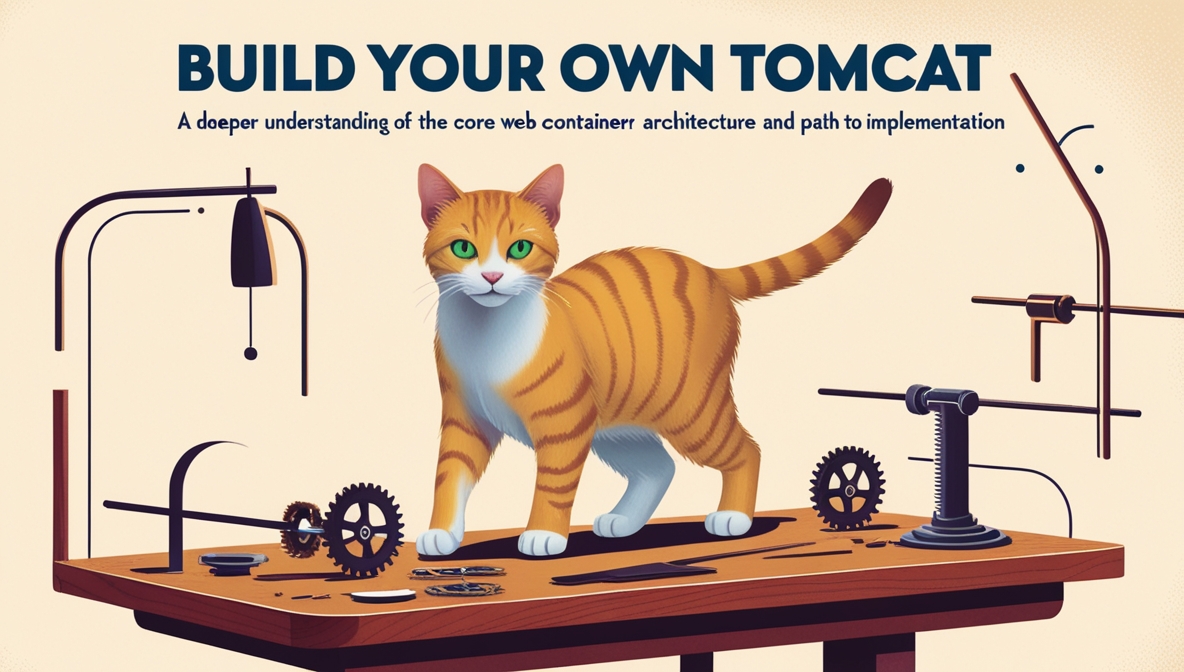上一章内容 第一章:实现基础 HTTP 服务器-MiniTomcat
在本章节中,我们将为 HTTP 服务器增加对请求路径、方法和头部信息的解析能力,并基于请求路径返回服务器上的静态文件内容。通过实现这一功能,我们将使服务器能够类似于静态资源服务器,为客户端提供 HTML、CSS、JavaScript 等文件的访问。
2.1 功能目标
解析 HTTP 请求 :识别请求路径、请求方法(如 GET、POST)。
静态文件支持 :根据请求路径查找服务器上的文件(如 index.html),返回文件内容。
MIME 类型支持 :根据文件类型设置正确的 Content-Type 响应头,确保浏览器可以正确解析文件。
2.2 代码实现 我们将扩展之前的 SimpleHttpServer 类,增加对 HTTP 请求解析的逻辑,并在服务器文件系统中查找并返回请求的静态文件。
1 2 3 4 5 6 7 8 9 10 11 12 13 14 15 16 17 18 19 20 21 22 23 24 25 26 27 28 29 30 31 32 33 34 35 36 37 38 39 40 41 42 43 44 45 46 47 48 49 50 51 52 53 54 55 56 57 58 59 60 61 62 63 64 65 66 67 68 69 70 71 72 73 74 75 76 77 78 79 80 81 82 83 84 85 86 87 88 89 90 91 92 93 94 95 96 97 98 99 100 101 102 103 104 105 106 107 108 109 110 111 112 113 114 import java.io.*;import java.net.*;public class SimpleHttpServer { private static final int PORT = 8080 ; private static final String WEB_ROOT = "webroot" ; public static void main (String[] args) { try (ServerSocket serverSocket = new ServerSocket (PORT)) { System.out.println("HTTP Server is running on port " + PORT); while (true ) { Socket clientSocket = serverSocket.accept(); System.out.println("New connection from " + clientSocket.getInetAddress()); handleRequest(clientSocket); } } catch (IOException e) { e.printStackTrace(); } } private static void handleRequest (Socket clientSocket) { try (InputStream inputStream = clientSocket.getInputStream(); OutputStream outputStream = clientSocket.getOutputStream(); BufferedReader reader = new BufferedReader (new InputStreamReader (inputStream))) { String requestLine = reader.readLine(); if (requestLine == null || requestLine.isEmpty()) return ; System.out.println("Request: " + requestLine); String[] parts = requestLine.split(" " ); String method = parts[0 ]; String path = parts[1 ]; if (!method.equals("GET" )) { sendResponse(outputStream, 405 , "Method Not Allowed" , "Only GET method is supported." ); return ; } URL url = SimpleHttpServer.class.getClassLoader().getResource(WEB_ROOT+ path); if (null == url){ sendResponse(outputStream, 404 , "Not Found" , "The requested resource was not found." ); return ; } File file = new File (url.getPath()); if (file.exists() && !file.isDirectory()) { sendFileResponse(outputStream, file); } else { sendResponse(outputStream, 404 , "Not Found" , "The requested resource was not found." ); } } catch (IOException e) { e.printStackTrace(); } finally { try { clientSocket.close(); } catch (IOException e) { e.printStackTrace(); } } } private static void sendResponse (OutputStream outputStream, int statusCode, String statusText, String message) throws IOException { PrintWriter writer = new PrintWriter (outputStream, true ); writer.println("HTTP/1.1 " + statusCode + " " + statusText); writer.println("Content-Type: text/html; charset=UTF-8" ); writer.println(); writer.println("<html><body><h1>" + statusCode + " " + statusText + "</h1><p>" + message + "</p></body></html>" ); } private static void sendFileResponse (OutputStream outputStream, File file) throws IOException { PrintWriter writer = new PrintWriter (outputStream, true ); writer.println("HTTP/1.1 200 OK" ); writer.println("Content-Type: " + getContentType(file)); writer.println("Content-Length: " + file.length()); writer.println(); try (FileInputStream fis = new FileInputStream (file)) { byte [] buffer = new byte [1024 ]; int bytesRead; while ((bytesRead = fis.read(buffer)) != -1 ) { outputStream.write(buffer, 0 , bytesRead); } } } private static String getContentType (File file) { String name = file.getName().toLowerCase(); if (name.endsWith(".html" ) || name.endsWith(".htm" )) { return "text/html" ; } else if (name.endsWith(".css" )) { return "text/css" ; } else if (name.endsWith(".js" )) { return "application/javascript" ; } else if (name.endsWith(".jpg" ) || name.endsWith(".jpeg" )) { return "image/jpeg" ; } else if (name.endsWith(".png" )) { return "image/png" ; } else { return "application/octet-stream" ; } } }
2.3 代码解析
请求解析 :
1 2 3 4 5 > GET /index.html HTTP/1.1 > Host: localhost:8080 > User-Agent: curl/8.7.1 > Accept: */* > Proxy-Connection: Keep-Alive
上面是一个普通的Http请求传输的文本,我们目前只需要解析第一行
1 2 3 4 String requestLine = reader.readLine();String[] parts = requestLine.split(" " ); String method = parts[0 ];String path = parts[1 ];
我们读取请求行,并将其按空格分割,从而提取请求方法和路径。这里仅支持 GET 请求,对于其他请求方法返回 405 错误。
静态文件查找 :
1 2 3 URL url = Resources.getResource(WEB_ROOT+ path);File file = new File (url.getPath())
将请求的路径和服务器的根目录 WEB_ROOT 拼接,找到相应的文件。如果文件存在且不是目录,就返回该文件的内容,否则返回 404 错误。
文件响应 :
1 2 3 4 5 6 7 try (FileInputStream fis = new FileInputStream (file)) { byte [] buffer = new byte [1024 ]; int bytesRead; while ((bytesRead = fis.read(buffer)) != -1 ) { outputStream.write(buffer, 0 , bytesRead); } }
我们通过文件流读取文件内容,并将其写入输出流发送给客户端。
MIME 类型判断 :
1 private static String getContentType (File file) { ... }
根据文件后缀来确定文件的 MIME 类型,从而设置正确的 Content-Type,如 text/html、application/javascript,确保客户端能正确解析文件内容。
完整的响应信息文本 :
1 2 3 4 5 6 7 8 9 10 11 12 < HTTP/1.1 200 OK < Content-Length: 111 < Connection: keep-alive < Content-Type: text/html < Keep-Alive: timeout=4 < Proxy-Connection: keep-alive < <!DOCTYPE html> <html> <head><title>Test Page</title></head> <body><h1>This is a test page.</h1></body> </html>%
2.4 测试静态文件支持
在项目根目录下创建 webroot 文件夹,并放入测试文件 index.html:
1 2 3 4 5 <!DOCTYPE html > <html > <head > <title > Test Page</title > </head > <body > <h1 > This is a test page.</h1 > </body > </html >
启动服务器,并在浏览器中访问 http://localhost:8080/index.html,应显示 index.html 的内容。
请求一个不存在的文件(如 http://localhost:8080/notfound.html),应返回 404 错误。
2.5 学习收获 通过本章节的实现,我们深入理解了以下知识点:
HTTP 请求解析 :解析请求的路径、方法,处理不同请求的基本逻辑。
静态文件的处理 :利用文件系统中的路径查找和返回内容,为客户端提供静态资源的访问。
响应头的设置 :根据请求的文件类型,设置 Content-Type 响应头,从而确保客户端正确渲染不同类型的文件。
项目源代码地址:
https://github.com/daichangya/MiniTomcat/tree/chapter2/mini-tomcat
在下一章中,我们将继续实现连接器组件,以便进一步解耦网络连接处理和请求解析。









